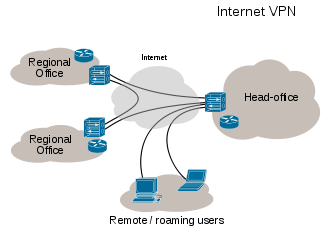ActiveVideo is an immersive, media-rich viewing experience that blends the choice, control and advertising models of the Internet with the convenience, image quality and instantaneous response of cable television.
The primary goal of ActiveVideo is to create a broadband video experience for television viewers while integrating as seamlessly as possible into the workflows used by programmers and the distribution technologies used by cable-TV networks. To achieve this, ActiveVideo uses MPEG Stitching technology to assemble cached Web content and streaming, broadcast or on-demand programming into a video stream customized for each viewer. MPEG Stitching dynamically composites a full-screen image from multiple MPEG encoded elements in response to remote control key presses as the viewer interacts with programming. ActiveVideo essentially shifts client centric application development to a flexible client-server model similar to Web browsers.
ActiveVideo's network-based approach overcomes legacy set-top box limitations to efficiently deliver new classes of personalized multimedia applications to an operator's entire subscriber base without requiring new network or CPE capital investment. This "develop once, deploy everywhere" strategy also allows programmers and advertisers to reach mass audiences quickly and economically, reusing much of what they already produce for the Web.
ActiveVideo uses standard interfaces so Web designers can work with existing media assets and familiar Web authoring tools to create interactive programming for television. No new tools or technologies must be mastered, and ActiveVideo programming can interact with decision support and fulfillment systems using deployed Internet protocols.
Programmers can update their designs or add functionality any time, within the terms of their business agreements with network operators. The ActiveVideo Distribution Network ensures that updates arrive promptly at the required networks, allowing programmers nearly instantaneous control of their content. This enables television programming innovation and change to move at the speed of the Internet.
How is ActiveVideo different from "traditional" interactive television?
Cable television operators currently have the most robust and high-quality networks for the delivery of video, providing a quality of service that over-the-top Internet video providers simply can't match. And, while cable systems are aggressively moving towards next generation interactive platforms, application developers continue to struggle with legacy limitations and long, complex development and integration cycles. The number of different set-top box models in the field requires programmers to author multiple versions of each application or to restrict features to the least capable client. Application designs are often constrained by the number of available tuners, insufficient processor and memory capacity, on-screen graphics display capabilities and the network infrastructure's ability to deliver and manage large amounts of media and graphics.
ActiveVideo operates differently than traditional interactive television applications. In fact, ActiveVideo applications are so different that it is more accurate to think of them as interactive programming. Instead of relying on set-top box hardware and software to execute and render an application, the user interface and navigation are embedded in the programming itself, allowing applications to be as rich and complex as the programmer can imagine.
ActiveVideo components
The ActiveVideo Platform supports the entire application lifecycle from content creation and distribution through deployment and real-time operation and monitoring. The platform consists of three logical subsystems.
ActiveVideo Editor
ActiveVideo Set-Top Box Client
ActiveVideo Distribution Network (AVDN)





